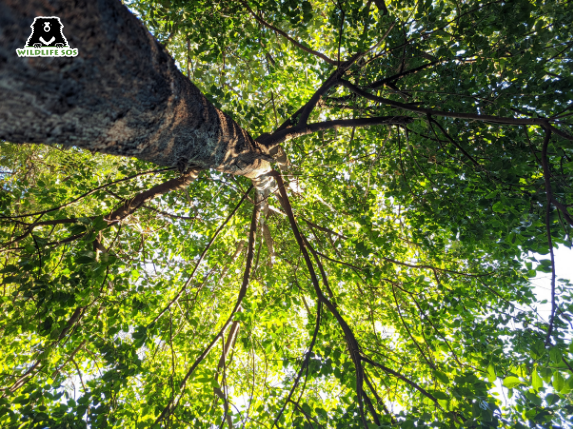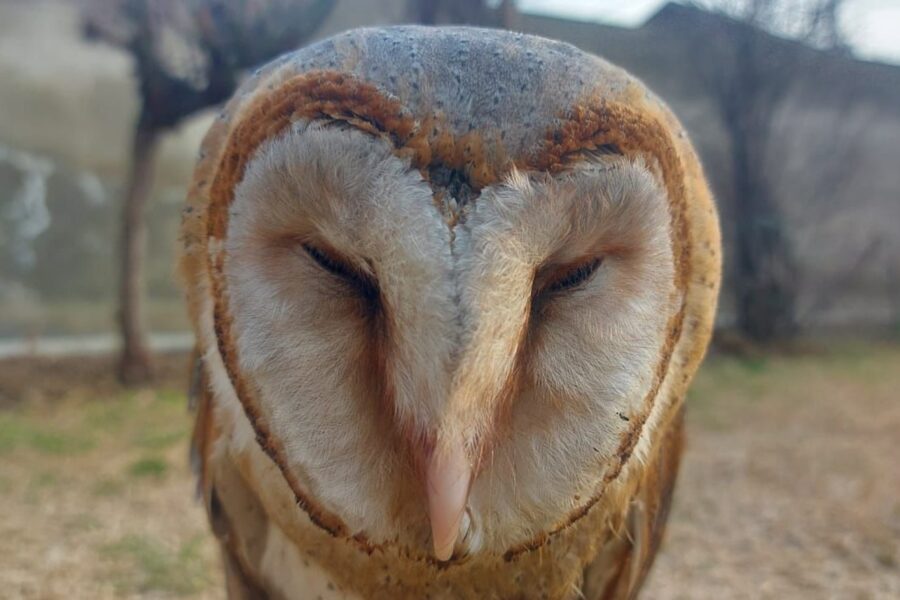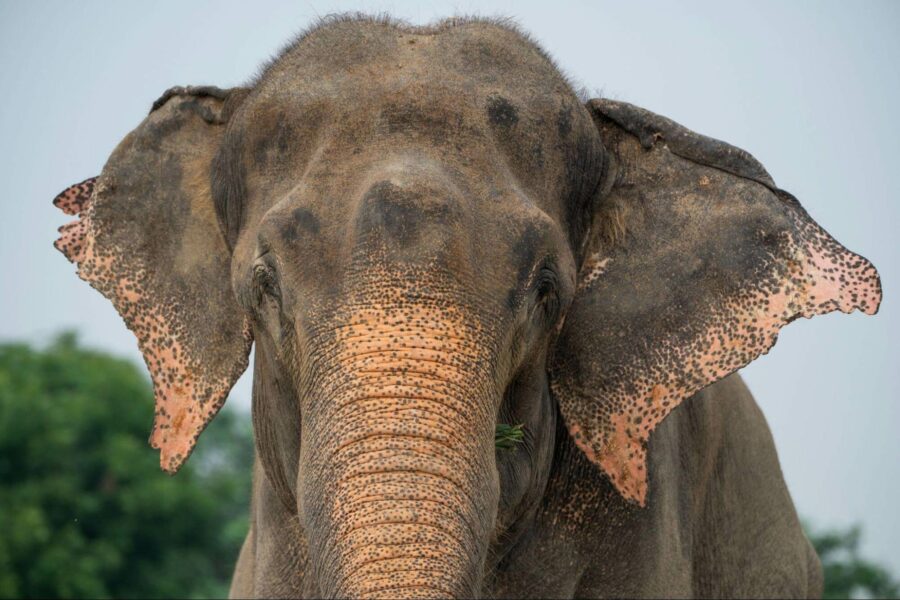Our busy lives today rarely makes us stop and look at the health of the environment around us. This World Environment Day, let’s pause, and take a moment (or two) to look at our surroundings. Among the widening roads, sounds of horns and construction, and the multi-storeyed buildings, what is it that you see?
Nature has gone so far into the background, that we may miss giving it a thought. But if we look more closely at the state of our environment, we begin to notice how little time we may have with it.
Plastic pollution, in the simplest of words, is the accumulation of plastics in the environment that causes hazards for wildlife and the environment. It has become a major issue as production of such materials continues to increase and the ability to manage plastic disposal is becoming more and more difficult. This has been a global problem for the longest time and many efforts are being put in to protect the global environment on an urgent basis.
Plastics and microplastics are taking over the oceans due to mass disposal, causing an immense threat to aquatic life. Around 19-23 million tonnes of plastic waste goes into the oceans every year. Marine animals get entangled in the disposed plastic or end up swallowing plastic products, both of which lead to irreversible damage.
According to a UN report, around 400 million tonnes of plastic is produced every year, and this is happening despite the lack of effective systems in place to get rid of this waste. Did you know that everyday products like cans, pencils, and even cigarette butts are made from non-biodegradable plastic? Small plastic products are in excess demand and therefore pile up in shops across communities, cities, and the country. The overwhelming usage of such products has prompted several small and medium-sized enterprises to come up with eco-friendly alternatives, but these products have yet to put up a strong fight in a market dominated by plastic.
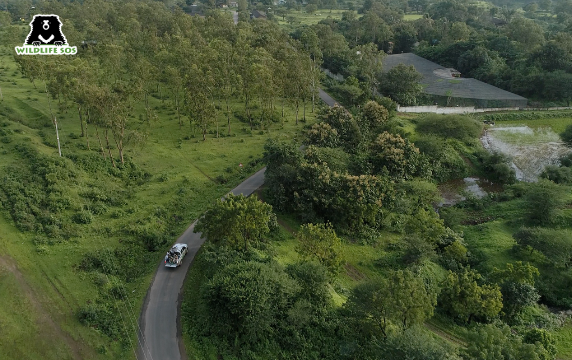
The After-effect
While phrases like “Say no to Plastic” or “Reduce. Reuse. Recycle.” created a wave of awareness and also motivated people to an extent, plastic pollution continues to shroud all efforts to preserve our environment and its natural inhabitants. Urgent and conscious endeavours must be made to combat this problem.
Within waste management of plastic is another toxic aspect that needs to be addressed. Burning of plastic leads to a lot of harmful gases being released into the atmosphere that not only affects the environment, but also the people and animals that live in it.
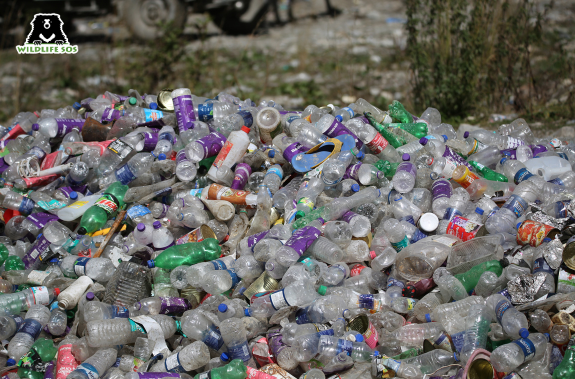
Anthropogenic activities have led to immense human encroachment into forested areas and have also created habitat fragmentation. Several wild and displaced animals are driven to human settlements in search of food. Garbage mounds have become a hotspot for wildlife to scavenge food from. While sifting through waste, animals end up consuming toxic plastic. One of the major alterations that Wildlife SOS has observed in Jammu and Kashmir is that the Himalayan brown bear has been venturing to lower altitudes for food and this has led to a huge rise in the human-wildlife conflict resulting in loss of property, livelihood and sometimes even life. To understand the change in the bears’ behaviour, our team carried out an intensive study that led to shocking revelations that 75% of food items in a brown bear’s diet was scavenged from garbage! Their excreta contained harmful fragments of plastic carry bags, milk powder, chocolate covers and sometimes even glass pieces.
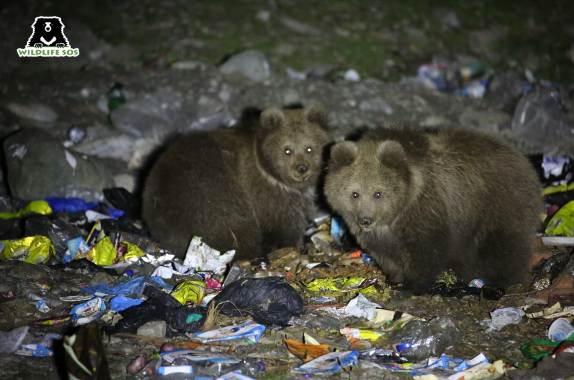
Garbage is the most convenient option for animals as it is easy to access and is within their reach. With the rise of plastic waste in the world, the consumption of plastic by animals is, therefore, inevitable.
The conundrum of plastic pollution is two-pronged since it involves tackling existing plastic in our environment and finding out ways through which the total production and consumption of plastic is discontinued. Coming up with strategies to free the world of plastic is indeed the need of the hour.
Course Of Action
The problem of plastic at the macro level requires a long-term strategy of stringent measures. While global initiatives can change policies around plastic production, at an individual level, we can step in to first understand and then bring change to our daily routines to help the overall condition of our environment. Here are some easy tips that we can take up.
Avoid Single-Use Plastic Products: As the name suggests, plastic products cannot be recycled or reused. These products can be cups, straws, bottles, plastic bags and many more daily use products. One of the ways to reduce their consumption is by using products like reusable cups and bottles, bamboo straws, paper, cloth bags or jute bags, and other eco-friendly products.The less we use plastic, the more we save our planet from pollution.
Clean-Up Drives: Whether it is in the hills while on vacation, on a corporate initiative, or simply within your residential colony — starting a clean-up drive is sure to make a difference. For those of us near water bodies, taking part in weekly or monthly beach and river clean-up drives can help aquatic life and also the flora and fauna around it. These sessions are a great way to come together as a community to save the planet and its inhabitants!
Supporting Organisations: Volunteering at organisations that have eco-friendly objectives can help increase knowledge about the pressing threats to the environment and their impact at local levels. Spreading awareness about the harmful effects of plastic that we use is the first and most crucial step to take in order to make a change.
Upcycling Plastic: When it comes to saving the environment, recycling organic waste material is a great idea. But what shall we do with non-biodegradable waste, such as plastic? One way to make sure it doesn’t end up in the garbage dump is to upcycle plastic! Upcycling is one of the best ways to explore your creativity: old plastic bottles and boxes can serve the purpose of storage. Use them to grow a plant or as containers for stationery! Not only are we minimising waste this way, we can also inspire others to do so.
On June 5 every year, scores of people come together to celebrate World Environment Day. To address this year’s theme on #BeatThePlastic, Wildlife SOS held a writing contest, inviting participants to share their inspiring stories on a plastic-free lifestyle. Follow us on Facebook and Instagram to know more!
Plastic is slowly but surely destroying our planet. By changing our habits and lifestyle, we will be working collectively to restore the beauty of our blue and green planet, and would be ensuring the survival of those who live on it. The journey to a plastic-free environment may be a long and difficult one, but the result will be worth the wait.
